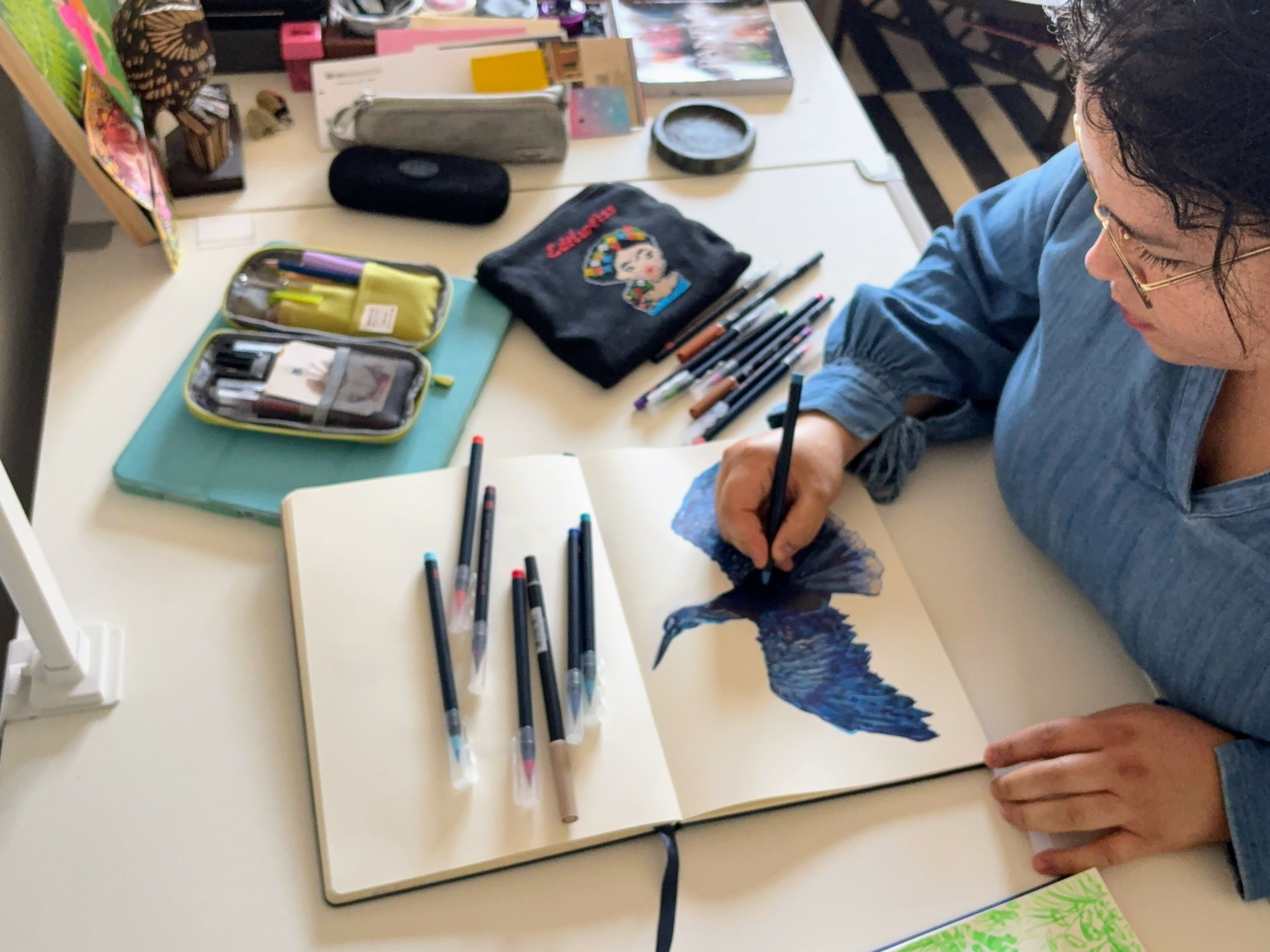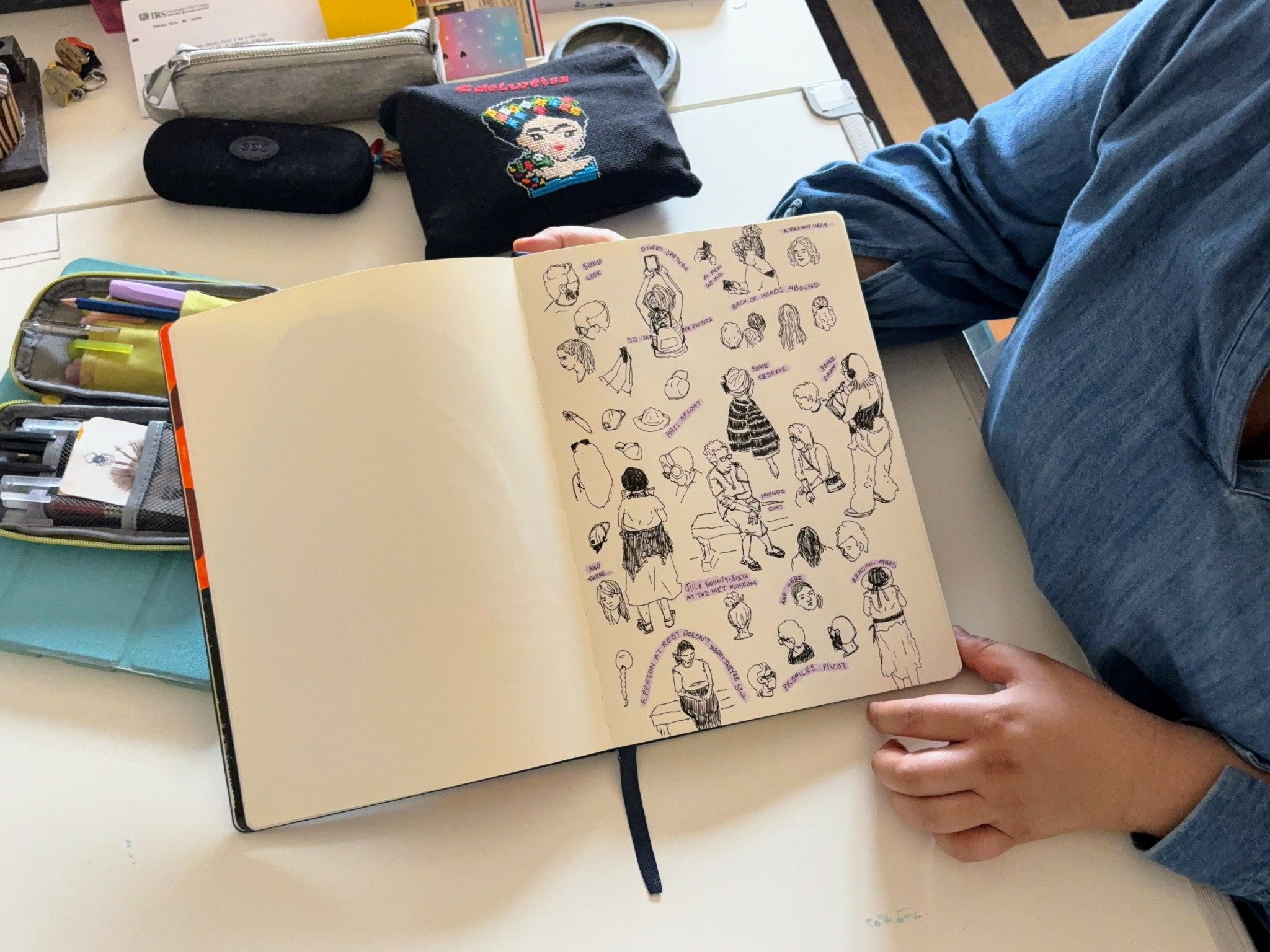We were lucky to catch up with Edelweiss Cardenas recently and have shared our conversation below.
Alright, Edelweiss thanks for taking the time to share your stories and insights with us today. When did you first know you wanted to pursue a creative/artistic path professionally?
I was 15 years old in Chicago, attending a tech/arts high school where I had chosen to major in photography. Originally I had wanted to be in the visual arts part of the school but there was no more room so I was placed in the tech program. Thankfully photography was part of the tech program, so I chose to major in that. I ended up loving photography, but I still continued to draw. My photography teacher Mr. Anderson was a wonderful instructor who knew how to nurture our creative spirits. He informed me of a free after school arts program called Marwen that was in the River North Gallery District of the city. After looking into it with my parents, I signed up and enrolled in an oil painting class. Every week I would take the Orange Line Train from the South Side of Chicago up to Marwen. After that first semester, I signed up for multiple classes a week and eventually enrolled in Marwen’s summer internship programs, followed by an art ward bound trip to New York City. Attending Marwen and being taught by professional artists, many of whom were also people of color, made a deep impact on me. This was a place where I was taught about craft but also given examples of how to further develop as a professional artist after high school. Before attending Marwen, I thought I would apply to a liberal arts college and major in English. But because I had become part of this community, I then saw there was a road to pursue life as an artist.

Edelweiss, love having you share your insights with us. Before we ask you more questions, maybe you can take a moment to introduce yourself to our readers who might have missed our earlier conversations?
Born in central Mexico and raised in Chicago, I spent my childhood traveling between two distinct places, each with their own collective artistic practices. From a young age, illustration allowed me to navigate these spaces. While drawing, I could trace steps over and over, quickly make a new stroke, or create and erase marks that served as foundations for things to come. These actions mirrored my life growing up in two countries, with two languages, and in the different racial and class realities within the transnational cities I called home.
In my formal art education I was fortunate enough to take classes with members of the Chicago Imagists group who gave me new ways to engage with my surroundings. Their classes looked beyond the gallery walls for creative insight. I was encouraged to regard every element my eye could catch as inspiration; this could include a fruit, shoe, or a bus. If I let go and put these all down on paper–deconstructed or contoured–they could contribute to unique form inventions. Creating abstract pieces satisfies a different part of my brain that craves to meander through mazes but without a need to escape. I find myself closing gaps and building spaces and structures that lead me curiously to make a new stroke.
After acquiring my BFA at the School of the Art Institute of Chicago, I moved to New York with the aim to pursue my art practice. I spent the next few years working with artists whose work ranged from performance art to sculpture, each teaching me about discipline and the importance of championing your work. As a former instructor shared, “Take care of your work and your work will take care of you.” In this vein, pursuing an MFA in Illustration at the Fashion Institute of Technology cemented my commitment to my art practice by continuing to nurture my craft.
Today I work as an illustrator based in New York City. Known for my vivid and organic art style, I primarily work with traditional materials. My artwork captures the intricate details of people, animals, and natural forms, bringing them to life with a blend of precision and play. My illustrations are known for their rich colors and stylized forms that are present in every feature of my work. Presently I am also exploring using visual representation to narrate captivating stories in picture book and comic format.

What do you think is the goal or mission that drives your creative journey?
Family lore, be it personal stories, traditions, or embellished anecdotes, influence my narrative illustrations because of the humor that always accompanies any account from our past. Through my own experience of repeatedly moving between Mexico and the United States as a young child, I had a hard time adapting to each place. Languages are more easily attainable when you’re young but the nuances of everyday life and behavior is something that can’t be taught. What did help throughout this time were my mother’s words, her hilarious bedtime stories, and her recounting of joyous and silly memories of our family in Mexico. Her family tales linked me to loving memories of home and smoothed my nerves as I stepped into new grounds.
Natural landscapes and animals also feed my creative brain through the many colors, textures, and shapes they encompass. I absorb these inspirations by experiencing them in person as well as through more directed research. Viewing the organic world also provides chronicles of our past, our present, and our possible future. Moments like that can cause anxiety but also appreciation. It is this kind of dichotomy of feelings that I want to reflect in my work.

What’s the most rewarding aspect of being a creative in your experience?
Art helps me decipher feelings as they bubble up to the surface and get muddled with external experiences. I love how my practice grounds me in the present and allows me to reflect on what is happening around me. Through this process of reflection, I use drawing and painting to explore themes of family and nature, and the feelings of grief and joy that come from them. Producing with tangible materials links me directly to my nervous system as well as the natural surroundings. Loose and gestural landscapes highlighting the figure with lines are forms that I revisit because they enable me to get a sense of the larger scene while focusing on a protagonist message.
Contact Info:
- Website: https://www.edelweisscardenas.com/
- Instagram: https://instagram.com/edelweisscardenas/
- Linkedin: https://www.linkedin.com/in/edelweiss-cardenas/






